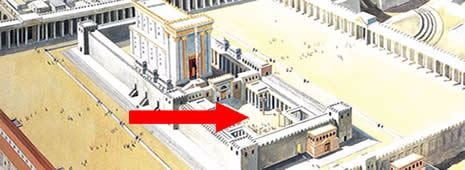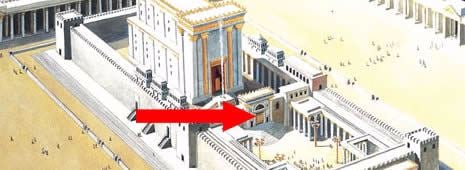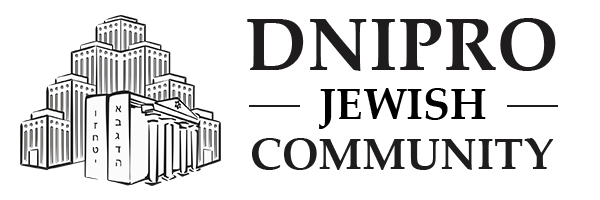In the days leading up to the 9th of Av — the day of mourning for the destruction of the Temple — Jews around the world dedicate special attention to studying the laws related to the Beit HaMikdash. This is not merely a remembrance of the past, but a step toward the future rebuilding of the Temple.
Our website continues the series of materials for study during this period — about the history, structure, and spiritual essence of the Temple.

The Ezrat Nashim – The Women’s Courtyard
This courtyard contained a balcony reserved for women – hence its name – the women’s courtyard. Chambers were built in the four corners of this courtyard for various temple needs:
Lishkat Hanezirim – Chamber of the Nazarites; Lishkat Ha’eitzim – Chamber of the Wood; Lishkat Hametzora’im – Chamber of the Metzorah’s; Lishkat Hashemanim – Chamber of Oils
Women’s Balcony
A gallery was reserved here for women who came to view the Simchat Bet Hasho’eva (Rejoicing of the Water Drawing Ceremony) which was held in this courtyard during the festival of Succot.
To the North and South of the Ezrat Nashim (women’s courtyard) were stairways leading to the Women’s Balcony.
Originally, the women assembled in the courtyard and the men danced and sang outside, beyond the Cheil.
Since the women were unable to have a good view from inside the Women’s Courtyard, they would pass beyond the doors into the area. The mingling of men and women during a sacred celebration is not permitted. To remedy the situation, balconies were erected to provide a viewing area for the women.
Lishkat Hanezirim – Chamber of the Nazarites
A Nazarite is one who takes an oath that he will not cut his hair or drink wine (or any grape product) for a specified amount of time. The Torah requires a Nazarite to bring 3 Karbanot (sacrifices) to the Bet Hamikdash after fulfilling his pledge. One of these sacrifices, the “Shelamim” offering was cooked in this chamber. The Nazarites then had their hair clippings tossed into the fire over which the “Shelamim” offering was cooking.
Lishkat Ha’eitzim – Chamber of the Wood
The Lumber used for the service of the Bet Hamikdash (i.e. for the altar and the “Beis Hamoked”) was stored in this room.
In addition, elderly priest (or priests otherwise unfit for the temple service) would examine the wood for worms here. If any were found, the wood would be deemed unfit for temple use. [Rotting wood would also be disposed of.]
The Talmud records the following incident: It once happened that priests were sitting and sorting wood in this Chamber, when one of them noticed that a floor tile was loose. He realized that this led to the secret tunnel in which the Holy Ark was hidden.
[The Ark had been hidden during the time of Yoshiyahu (Josiah) towards the end of the First Temple era. When the Jews returned from the seventy-year exile, the Ark could not be found. Tradition says that there was to be no Ark during the Second Temple era.]
The priest, who had discovered the hidden place of the Ark, sought to crack open the tile with his hatchet, when suddenly fire issued forth and consumed him. This was taken as an omen that the Ark should remain hidden.
Lishkat Hashemanim – Chamber of the Oils
In this chamber the oil, wine, and flour needed for sacrificial purposes were stored. When one wanted to offer a sacrifice that required these ingredients, he was required to buy them here.
The purchaser would first go to the Chamber of Receipts. He would tell the attendant the type of meal offering he needed. After paying for it, the attendant would hand over a receipt listing his purchases.
The receipt would be taken to this chamber and the attendant here would dispense the required amounts of oil, wine, and flour.
Lishkat HaMetzora’im – Chamber of Metzorah’s
A Metzorah is someone who suffers from Tzara’at (similar to the modern day leprosy) – an illness inflicted by G‑d as a punishment for certain misdeeds.
After the Metzorah was cured, he was required to come to the Bet Hamikdash and immerse himself in a ritual bath situated in this room. Afterwards he would bring sacrifices that would complete the purification process.

Sha’ar Nikanor – Nikanor Gate
The Nikanor Gates led from the Ezrat Nashim to the Azarah. Fifteen semi-circular steps lead to this gate. On occasion, the Levites sang as they stood on these steps.
The Fifteen Steps
At the western end of the Women’s Courtyard were fifteen semi-circular steps. Each was half a cubit high and half a cubit deep. On occasion, the Levites sang as they stood on these steps.
Chamber of Instruments
Near the base of the steps, built into the western wall of the Women’s Courtyard, were two doors that led underneath the Azarah, which was built on higher ground than the Women’s Courtyard.
The doors led into a single large underground chamber called the Chamber of Instruments. Here the Levites conducted choir rehearsals and stored their instruments.
The Nikanor Gate
The doorway atop the fifteen semi-circular steps led into the Azarah. The first eleven cubits along the eastern side of the Azarah was called the Courtyard of the Israelites.
The gateway atop the fifteen steps that led into the Courtyard of the Israelites were called the Upper Gate, also known as the Nikanor Gate.
Nikanor was the benefactor who paid craftsmen in Alexandria, Egypt, to fashion the two large brass doors used for this gate.
Each door was 5 cubits by 20 cubits. The brass was carved with intricate designs, and its finish was exceedingly bright.
A Story:
As these doors were being sent by ship from Egypt to Judea, a storm broke out. The crew was forced to cast one of the two brass doors into the sea.
When the danger continued, the crew decided to toss the second gate out as well. Hearing their plans, Nikanor declared that if they throw out the door, they should throw him out as well. His self-sacrifice called for a miracle and the storm subsided. When the ship docked, the door cast overboard was miraculously found floating in the harbor.
All the Temple doors were plated with gold except the Nikanor gate. The rabbis wanted the people to see the “miracle doors” in their pristine form. Additionally, the brass finish had the appearance of fine gold.
The heavy doors required twenty men to open them. The Nikanor Gate was opened only on the Sabbath, festivals, and Rosh Chodesh. If the king was present in the Temple, the doors were also opened in his honor. On all other days, smaller gateways (to the left and right of Nikanor gate) were used.




